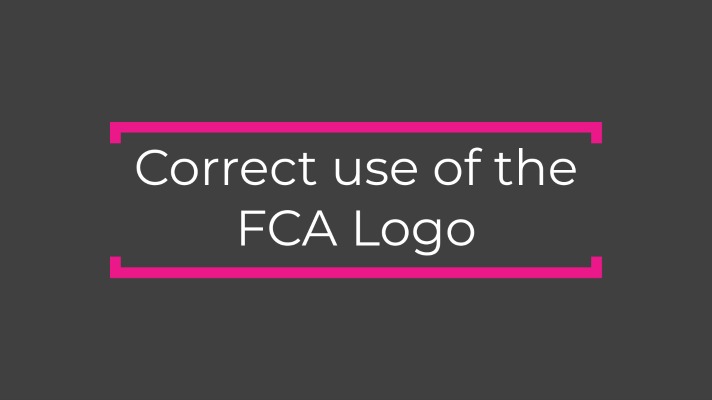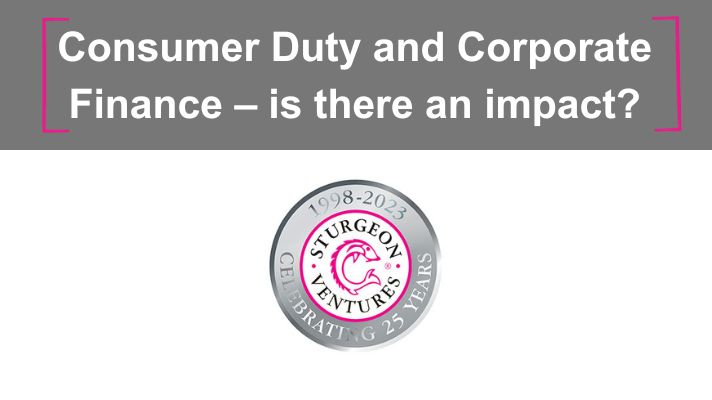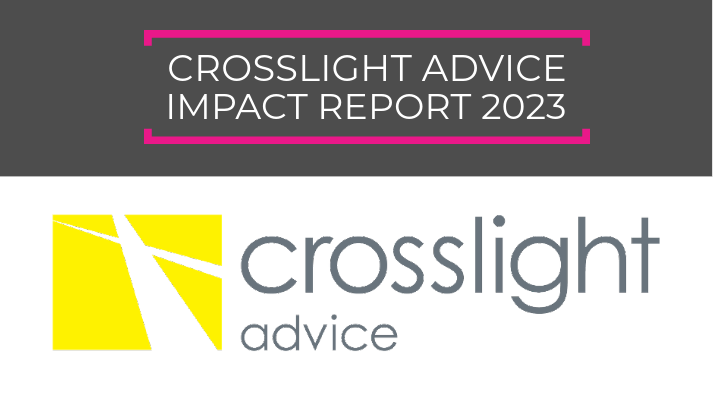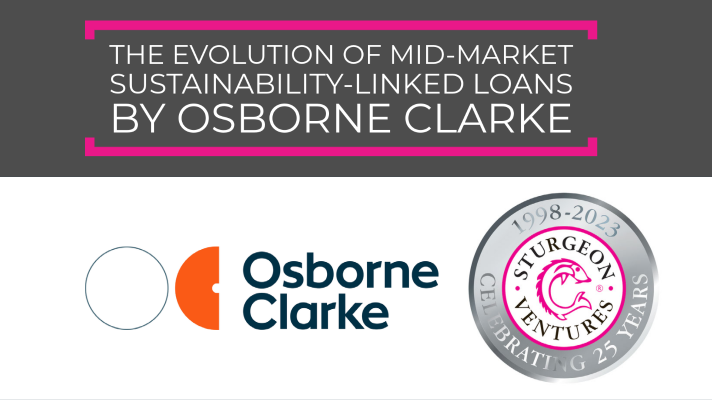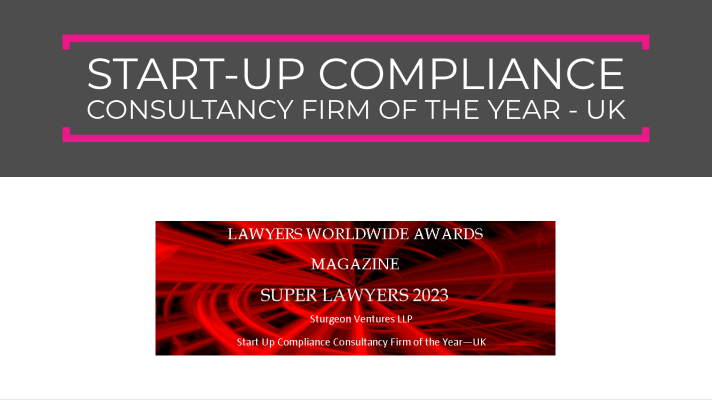AIFMD: Renewed Focus on Its Impact on Non-EU Managers of Private Funds
William Yonge of Morgan Lewis has shared his update with Sturgeon Ventures on the renewed focus on the impact of AIFMD for Non-EU Managers of Private Funds.
Sturgeon Ventures have a number of solutions for non EU Managers for AIFMD which they will share in November at the conference in NY for Women in Alternative Investments:
Although AIFMD took effect in key EU member states in 2013, in practice, its one-year grace period largely gave managers of alternative investment funds an opportunity to postpone compliance until 22 July 2014.
The Alternative Investment Fund Managers Directive (AIFMD)[1] applies to non-EU managers of alternative investment funds[2] (AIFs) who market EU or non-EU AIFs to EU professional investors.[3] From no earlier than Q3/Q4 2015, non-EU managers of AIFs (AIFMs) who manage EU AIFs will be required to be authorised under AIFMD in their chosen member states of reference, whether or not they market their AIFs to EU professional investors and must also comply with the various regulatory requirements that authorisation implies, including those that relate to financial resources, disclosure and transparency, limits on leverage, the appointment of a depositary, and remuneration.
Non-EU AIFMs may be given a passport to market AIFs to EU professional investors in 2015, relieving them of the burdens of compliance with the patchwork of differing national private placement regimes (NPPRs) throughout the EU. If that happens, non-EU AIFMs who wish to use the passport must first become authorised under AIFMD by the regulator based in their chosen member state of reference. If the passport is provided, it will be the first time an EU single-market directive has granted non-EU firms a pan-EU passport. Non-EU AIFMs may continue to market[4] AIFs to professional investors in the EU under NPPRs from 22 July 2013 to at least 2018, subject to the relevant NPPR, which must at a minimum implement the AIFMD private placement overlay (PPO). The PPO comprises the following:
- Transparency requirements for annual reports, pre-investment and ongoing disclosures to investors, and reporting to regulators
- Private equity requirements when AIFMs acquire major holdings in or are in “control” of an unlisted or listed EU company
- Cooperation agreements for systemic risk oversight must be in place between the regulators of the member states in which marketing is to occur, the third country of the non-EU AIFM, and the third country of the non-EU AIF
- The requirement that neither the third country of the non-EU AIFM nor AIF may be listed as “non-cooperative” by the Financial Action Task Force (FATF)
AIFMD allows member states to impose stricter requirements for private placement in addition to those mandated under AIFMD. Some member states have gone down that route by “gold plating” their NPPRs (although the UK has not). As a result, NPPRs throughout the EU remain heterogeneous despite the AIFMD PPO, and each member state’s NPPR must be checked before marketing takes place. AIFMD posits the potential abolition of NPPRs throughout Europe in 2018, leaving only the passport route for marketing AIFs to EU professional investors for both EU and non-EU fully authorised AIFMs.
There are a number of exemptions from AIFMD, including the following:
- AIFMD allows member states to establish a de minimis registration and reporting regime for AIFMs managing AIFs with assets under management that are below certain thresholds—so-called “sub-threshold AIFMs”.[5] Non-EU sub-threshold AIFMs may market AIFs that they manage in the EU without compliance with the PPO.
- Reverse solicitation or nonsolicited sales are exempt from AIFMD. Recital 70 of AIFMD states that AIFMD “should not affect the current situation, whereby a professional investor established in the [EU] may invest in AIFs on its own initiative”.
Summary of Routes to EU Investors for Non-EU AIFMs
Beginning 22 July 2014, it will no longer be possible for existing fundraising to continue on the pre-AIFMD basis. Non-EU AIFMs may consider the following options for reaching EU investors:
- AIFMD-compliant NPPRs incorporating the PPO, dependent on the existence of requisite cooperation agreements and subject to the challenges posed by those member states that have chosen to “gold plate” their NPPRs.
- Premarketing or promotion that falls short of “marketing” is not covered by AIFMD but will likely be subject to the facets of NPPRs that apply to such promotion.
- Reverse solicitation.
- The pan-EU marketing passport. Pending any decision to extend the marketing passport to non-EU AIFMs in 2015, prompt access to the passport will require the establishment of an EU-based AIFM that manages EU-based AIFs and full compliance with AIFMD.
Transparency Requirements
Annual Report
Non-EU AIFMs must provide an annual report for each AIF that they market in the EU. The annual report must be made available to the regulator in each target member state and must be provided to EU investors on request. Audited annual reports must be made available no later than six months from the end of the financial year. The first report will be due in respect of the financial year in which the obligation arises. The annual report must contain the following, amongst other things:
- A balance sheet or a statement of assets and liabilities
- An income and expenditure account for the financial year
- A report on the AIF’s activities over the financial year (e.g., an overview of investment activities or a summary of the portfolio and performance)
- The total amount of remuneration for the financial year, split into fixed and variable remuneration, paid by the AIFM to its staff
- The aggregate amount of remuneration, broken down by senior management and members of the staff of the AIFM whose actions have a material effect on the AIF’s risk profile
- Any carried interest paid by the AIF, where relevant
Disclosure to Investors
Mandatory pre-investment disclosures to investors are numerous and include the following:
- The investment strategy, objectives, restrictions, and risks of the AIF
- Circumstances in which the AIF may employ leverage, including the types and sources of leverage permitted and any associated risks
- The AIF’s valuation procedure and pricing methodology
- Fees, charges, and expenses
- How fair treatment of investors is ensured
In practice, the offering materials for the AIF should be reviewed carefully to ensure the mandatory pre-investment disclosures are included.
Mandatory periodic post-investment disclosures to investors cover the following:
- The percentage of the AIF’s assets subject to special arrangements that arise from their illiquid nature
- New arrangements for managing the AIF’s liquidity
- The current risk profile of the AIF and risk-management systems employed by the AIFM to manage those risks
Additional disclosures are required in the case of AIFs that employ substantial leverage.
Reporting to Regulators
For each AIF they market in the EU, AIFMs must regularly report on the following to the regulator in each target member state:
- The main instruments and markets, principal exposures, and most important concentrations
- The percentage of the AIF’s illiquid assets that are subject to special arrangements
- Any new arrangements for managing the AIF’s liquidity
- The AIF’s current risk profile (including market risk and liquidity profiles) and the risk-management systems employed by the AIFM to manage the market risk, liquidity risk, counterparty risk, and other risks, including operational risk
- The main categories of assets in which the AIF is invested, including the corresponding short-market value and long-market value, turnover, and performance during the reporting period
The reporting process is known as “Annex IV reporting” after the template form provided by the Level 2 Regulation[6] at Annex IV thereof. Broadly, Annex IV reporting is the counterpart to Form PF in the United States; however, there is limited commonality between those forms. AIFMs will likely need to invest in adequate systems and controls to fulfil their reporting obligations satisfactorily. The reporting frequency is dependent on the size of the assets under management and varies between quarterly, half-yearly, and annually. The first report is due as from the first day of the quarter following the quarter in which the reporting obligation arises until the end of the first reporting period. The deadline for filing the report is one month after the end of the reporting period; the AIFM of a fund of funds has an additional 15 days.
Private Equity Requirements
Investments in EU Unlisted Companies
When the proportion of voting rights held by an AIF in unlisted companies that have their registered office in the EU reaches or crosses the thresholds of 10%, 20%, 30%, 50%, and 75%, the AIFM must notify the regulator in the country where the company has its registered office. When an AIF acquires, individually or jointly, control over an EU unlisted company, the AIFM managing the AIF must notify the following entities:
- The unlisted company (this notification must request that the board of directors inform the employee representatives)
- The shareholders of the company
- The home member state regulator of the AIFM
Asset Stripping
AIFMD imposes restrictions on distributions (including dividends and interest on shares), capital reductions, share redemptions, or purchases of own shares by “controlled” portfolio companies during the first two years of ownership. An AIFM cannot facilitate, support, or instruct any of the above actions and must use its best efforts to prevent them.
UK Regime Governing Marketing of AIFs in the UK by Non-EU AIFMs
A non-EU AIFM must give written notification to the Financial Conduct Authority (FCA) before marketing in the UK an AIF managed by it. The notification must include a declaration by the AIFM confirming that the following conditions have been met:
- The AIFM is the legal person responsible for complying with the implementation relating to the marketing of the AIF
- The AIFM complies with the transparency requirements under AIFMD in relation to the AIF to be marketed
- If applicable, the AIFM complies with the private equity requirements under AIFMD in relation to the AIF to be marketed
- Written cooperation arrangements for systemic risk oversight are in place between the FCA and the supervisory authorities where the non-EU AIFM is established and, if applicable, the third country where the AIF is established
- The country where the non-EU AIFM is established and, if applicable, the country where the AIF is established are not listed as non-cooperative by FATF
FCA has already entered into cooperation agreements with 43 non-EU regulators worldwide, including the U.S. Securities and Exchange Commission, Commodity Futures Trading Commission, Office of the Comptroller of the Currency and the Federal Reserve, and regulators in the key offshore fund domiciles.
A non-EU sub-threshold AIFM must give written notification to the FCA before marketing in the UK an AIF managed by it. The notification must include a declaration confirming that the following conditions have been met:
- The AIFM is the legal person responsible for complying with the implementing provisions that relate to the AIF’s marketing
- The AIFM is a sub-threshold third-country AIFM
To enable the FCA to monitor systemic risks effectively, the non-EU sub-threshold AIFM must provide the FCA with such information as the FCA directs on the main instruments in which it trades and the principal exposures and most important concentrations of the AIFs that it manages.
AIFMs should note that it is a criminal offence to knowingly or recklessly give the FCA false or misleading information.
Other Impacts of AIFMD on US Investment Advisers (and Other Non-EU AIFMs)
US Sub-Advisers (Discretionary) to EU AIFMs
An EU AIFM who wishes to delegate to a US sub-adviser must satisfy the following conditions:
- The AIFM must justify the delegation objectively
- The delegation must take the form of a written agreement
- The delegation of portfolio management or risk management may only be conferred on authorised or registered advisers and, where that is not so, the AIFM’s regulator must consent
- Where portfolio management or risk management is delegated, there must be a cooperation arrangement between the regulator of the EU AIFM and the regulator of the delegate
- The AIFM must demonstrate that the delegate has sufficient resources, that relevant staff members are of sufficiently good repute and experience, and that the delegate is qualified and able to undertake functions
- The AIFM must ensure that the delegate undertakes the delegated functions effectively and in compliance with his or her obligations as an AIFM under AIFMD
- The AIFM must comply with detailed obligations to monitor, instruct, and supervise the delegate
There is concern that the rules on delegation will require non-EU AIFMs to comply with the remuneration provisions of AIFMD.
US Advisers Delegating to EU Sub-Advisers (Discretionary)
US managers of AIFs investing in Europe through an EU sub-adviser should consider the issue carefully, with particular reference to costs, and note the following:
- Whether the EU sub-adviser will be classified as the AIFM of the non-EU AIF. If so, the sub-adviser will be subject to AIFMD structural and operational constraints.
- EU AIFMs of non-EU AIFs marketed in the EU must ensure that the AIF has appointed a depositary and must comply with certain other requirements.
- In contrast, a non-EU AIFM need only comply with the PPO.
We are happy to answer any questions on these obligations that clients may have.
Read the LawFlash on the Morgan Lewis website
[1]. Directive 2011/61/EU.
[2]. “AIF” means a collective investment undertaking that receives capital from a number of investors with a view to investing it in accordance with a defined investment policy for the benefit of those investors and that is not a UCITS fund. This definition will cover most hedge funds, private equity funds, private funds investing in other asset classes, funds of funds, and US-registered mutual funds.
[3]. A professional investor is an investor who is considered to be a professional client or who may, on request, be treated as a professional client within the meaning of Directive 2004/39/EC, the Markets in Financial Instruments Directive (MiFID).
[4]. AIFMD defines “marketing” narrowly in terms of a “direct or indirect offering”.
[5]. Broadly, sub-threshold AIFMs are AIFMs who manage portfolios of AIFs whose total assets across all the AIFs they manage (a) do not exceed €500 million, where the portfolios of AIFs consist of AIFs that are unleveraged and have no redemption rights exercisable for five years from the date of initial investment in each AIF or (b) do not exceed €100 million, including any assets acquired through use of leverage.
[6]. Commission Delegated Regulation (EU) No 231/2013.
William J. Yonge
wyonge@morganlewis.com
www.morganlewis.co.uk


